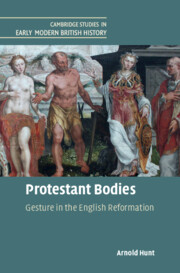1319 results
20 - Secularism
- from Part II - Modalities
-
-
- Book:
- The Cambridge Handbook of Constitutional Theory
- Published online:
- 27 March 2025
- Print publication:
- 24 April 2025, pp 333-342
-
- Chapter
- Export citation
Integrating mRNA vaccines into the attitudes toward genomics and precision medicine scale: A validation study with a sample of 4939 adults in the USA
-
- Journal:
- Journal of Clinical and Translational Science / Volume 9 / Issue 1 / 2025
- Published online by Cambridge University Press:
- 24 March 2025, e60
-
- Article
-
- You have access
- Open access
- HTML
- Export citation
Global Studies in Asian Laws
-
- Journal:
- International Journal of Legal Information , First View
- Published online by Cambridge University Press:
- 18 March 2025, pp. 1-38
-
- Article
-
- You have access
- HTML
- Export citation
How Consumer Law in Japan Shapes Religion: “Spiritual Sales” as a Legal Category
-
- Journal:
- Asia-Pacific Journal / Volume 22 / Issue 10 / October 2024
- Published online by Cambridge University Press:
- 14 March 2025, e3
-
- Article
-
- You have access
- Export citation
Epilogue: New Explorations on Food, Society, and Culture in Vietnam
-
- Journal:
- Asia-Pacific Journal / Volume 22 / Issue 2 / February 2024
- Published online by Cambridge University Press:
- 14 March 2025, e8
-
- Article
-
- You have access
- Export citation
Komeito's Soka Gakkai Protesters and Supporters: Religious Motivations for Political Activism in Contemporary Japan
-
- Journal:
- Asia-Pacific Journal / Volume 13 / Issue 41 / October 2015
- Published online by Cambridge University Press:
- 14 March 2025, e1
-
- Article
- Export citation
“Seeking Good Luck” in North Korea
-
- Journal:
- Asia-Pacific Journal / Volume 20 / Issue 9 / May 2022
- Published online by Cambridge University Press:
- 14 March 2025, e2
-
- Article
- Export citation
Introduction to the Special Issue: Food Charity, Religion, and Care in Vietnam
-
- Journal:
- Asia-Pacific Journal / Volume 22 / Issue 2 / February 2024
- Published online by Cambridge University Press:
- 14 March 2025, e4
-
- Article
-
- You have access
- Export citation
Introduction: Behind the Scenes of Media and Legal Responses to the Abe Assassination
-
- Journal:
- Asia-Pacific Journal / Volume 22 / Issue 10 / October 2024
- Published online by Cambridge University Press:
- 14 March 2025, e2
-
- Article
-
- You have access
- Export citation
Japanese Religious Responses to COVID-19: A Preliminary Report
-
- Journal:
- Asia-Pacific Journal / Volume 18 / Issue 9 / May 2020
- Published online by Cambridge University Press:
- 14 March 2025, e3
-
- Article
- Export citation
5 - Religion and the Global History of Europe
-
-
- Book:
- Globalizing Europe
- Published online:
- 06 March 2025
- Print publication:
- 13 March 2025, pp 66-75
-
- Chapter
- Export citation
12 - Globalizing European Gender History
-
-
- Book:
- Globalizing Europe
- Published online:
- 06 March 2025
- Print publication:
- 13 March 2025, pp 181-199
-
- Chapter
- Export citation
Chapter 16 - Political Poetics: Intercrossing Discourses and American Belonging
- from Part III - Genres
-
-
- Book:
- The Cambridge Companion to Nineteenth-Century American Literature and Politics
- Published online:
- 06 March 2025
- Print publication:
- 13 March 2025, pp 271-288
-
- Chapter
- Export citation
13 - The Right to Freedom of Thought in Kenya
- from Part IV - Africa
-
-
- Book:
- The Cambridge Handbook of the Right to Freedom of Thought
- Published online:
- 06 March 2025
- Print publication:
- 13 March 2025, pp 167-178
-
- Chapter
- Export citation
Military chaplains and equivalent religious personnel under international humanitarian law
-
- Journal:
- International Review of the Red Cross , First View
- Published online by Cambridge University Press:
- 27 February 2025, pp. 1-51
-
- Article
-
- You have access
- Open access
- HTML
- Export citation
23 - Moral and Religious Systems
- from Part V - Applications and Extensions
-
-
- Book:
- The Cambridge Handbook of Moral Psychology
- Published online:
- 20 February 2025
- Print publication:
- 27 February 2025, pp 575-595
-
- Chapter
- Export citation
The sacred gun: the religious and magical elements of America's gun culture
-
- Journal:
- Politics and Religion , First View
- Published online by Cambridge University Press:
- 27 February 2025, pp. 1-28
-
- Article
-
- You have access
- Open access
- HTML
- Export citation
Who leads the flock? Religion and the radical right among Brazilian migrants
-
- Journal:
- Politics and Religion , First View
- Published online by Cambridge University Press:
- 27 February 2025, pp. 1-21
-
- Article
-
- You have access
- Open access
- HTML
- Export citation
Cultural Influences on Transgender Rights: Examining the Role of Religion
-
- Journal:
- Politics & Gender , First View
- Published online by Cambridge University Press:
- 24 February 2025, pp. 1-27
-
- Article
- Export citation

Protestant Bodies
- Gesture in the English Reformation
-
- Published online:
- 20 February 2025
- Print publication:
- 27 February 2025


